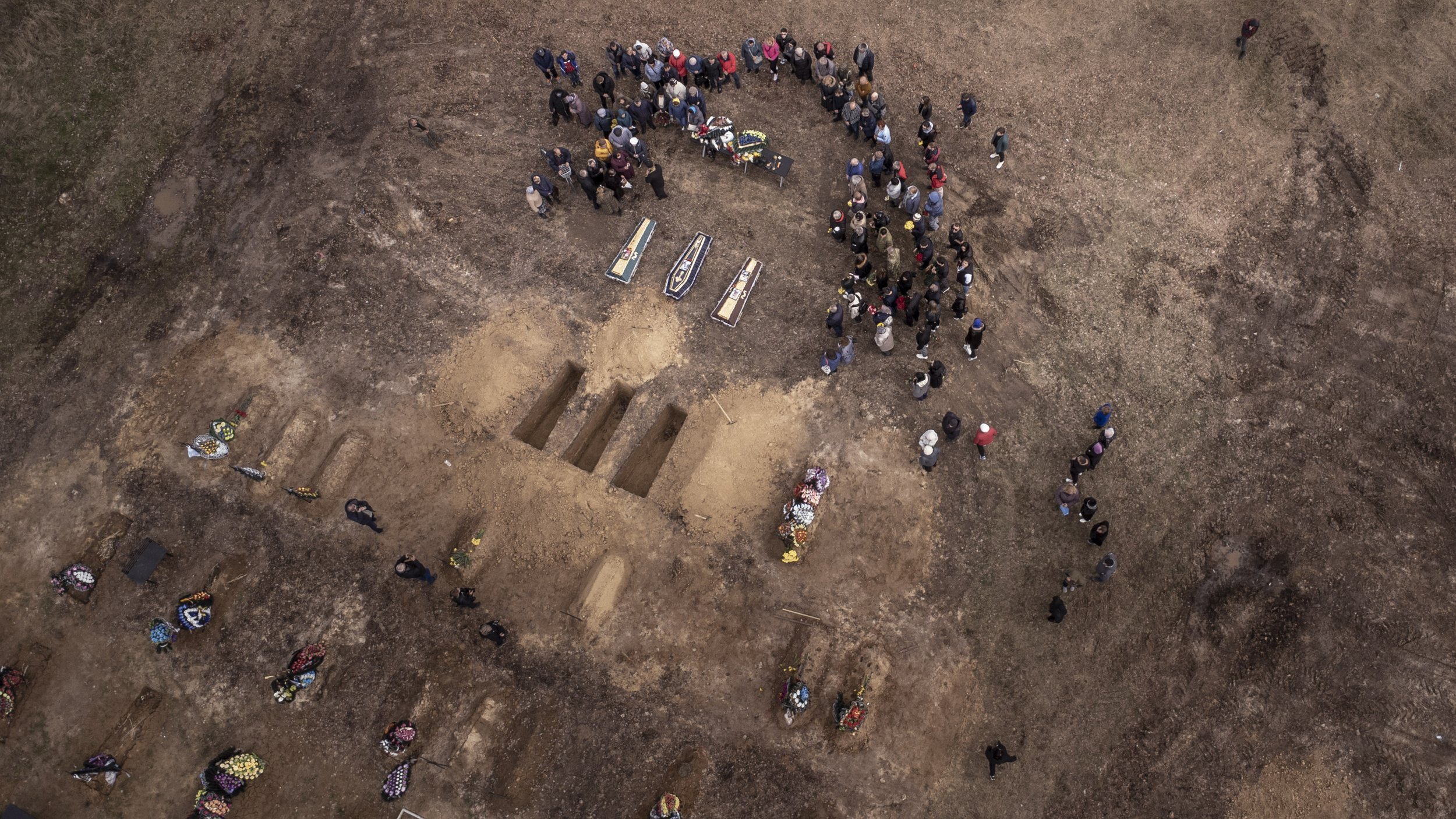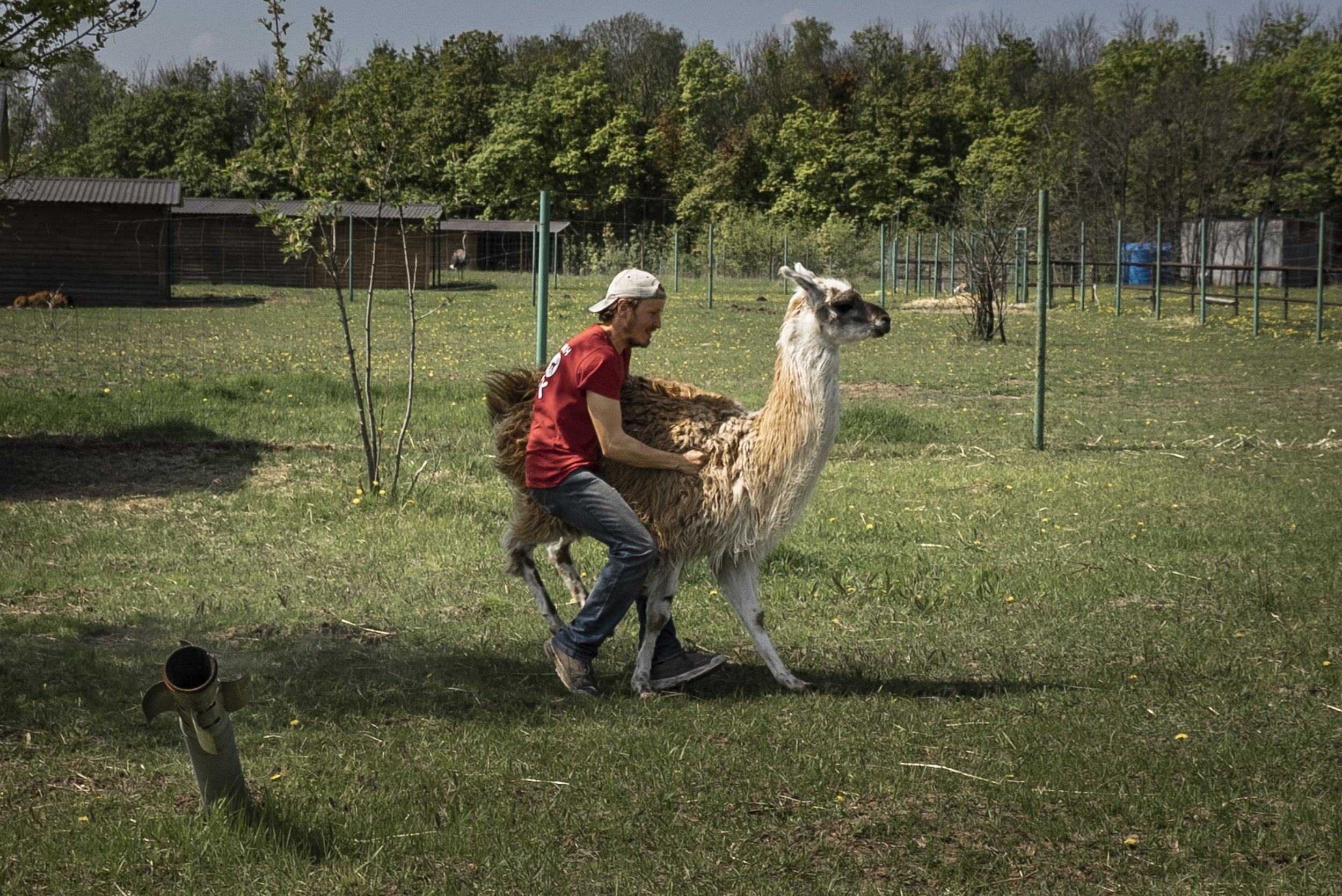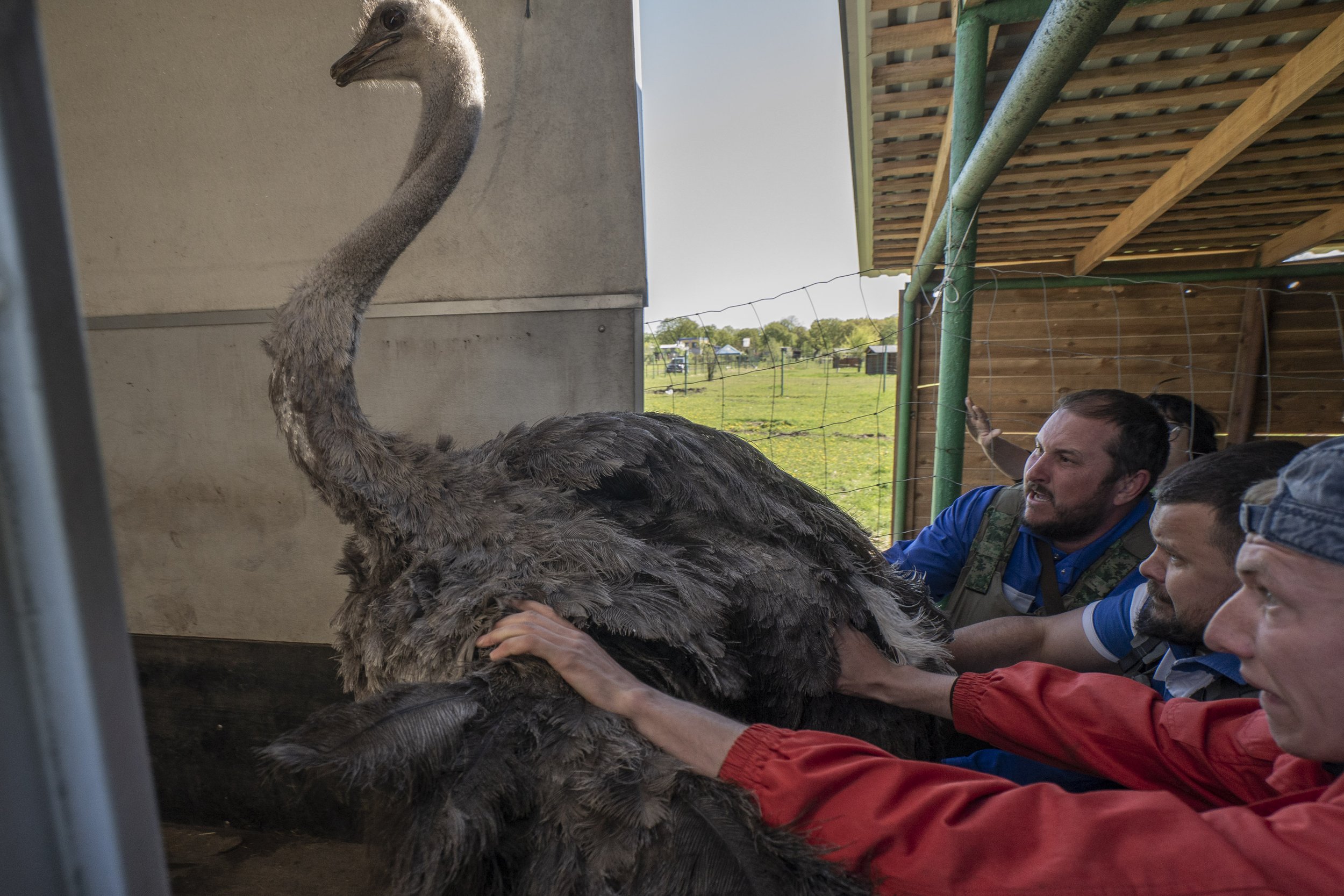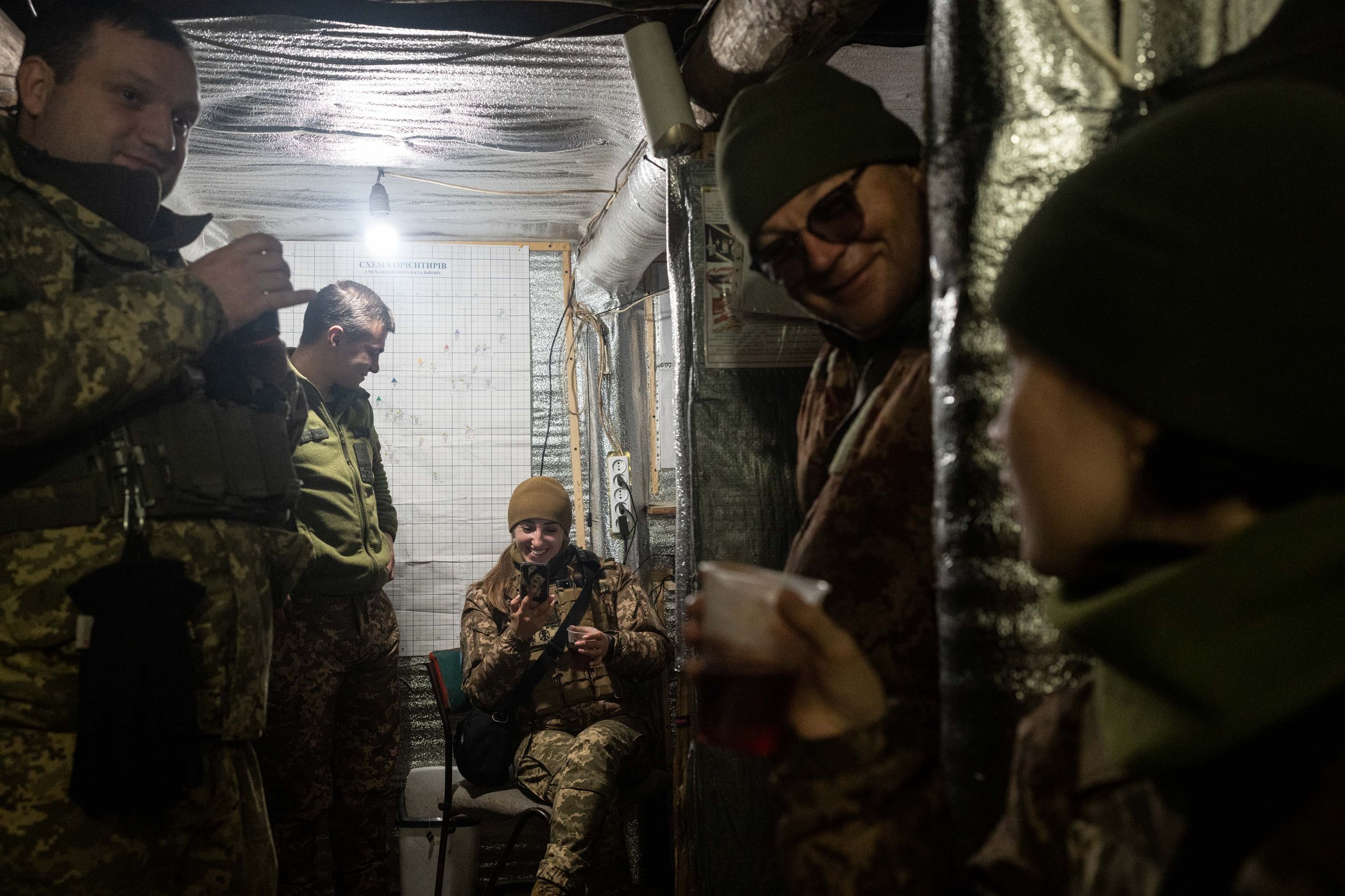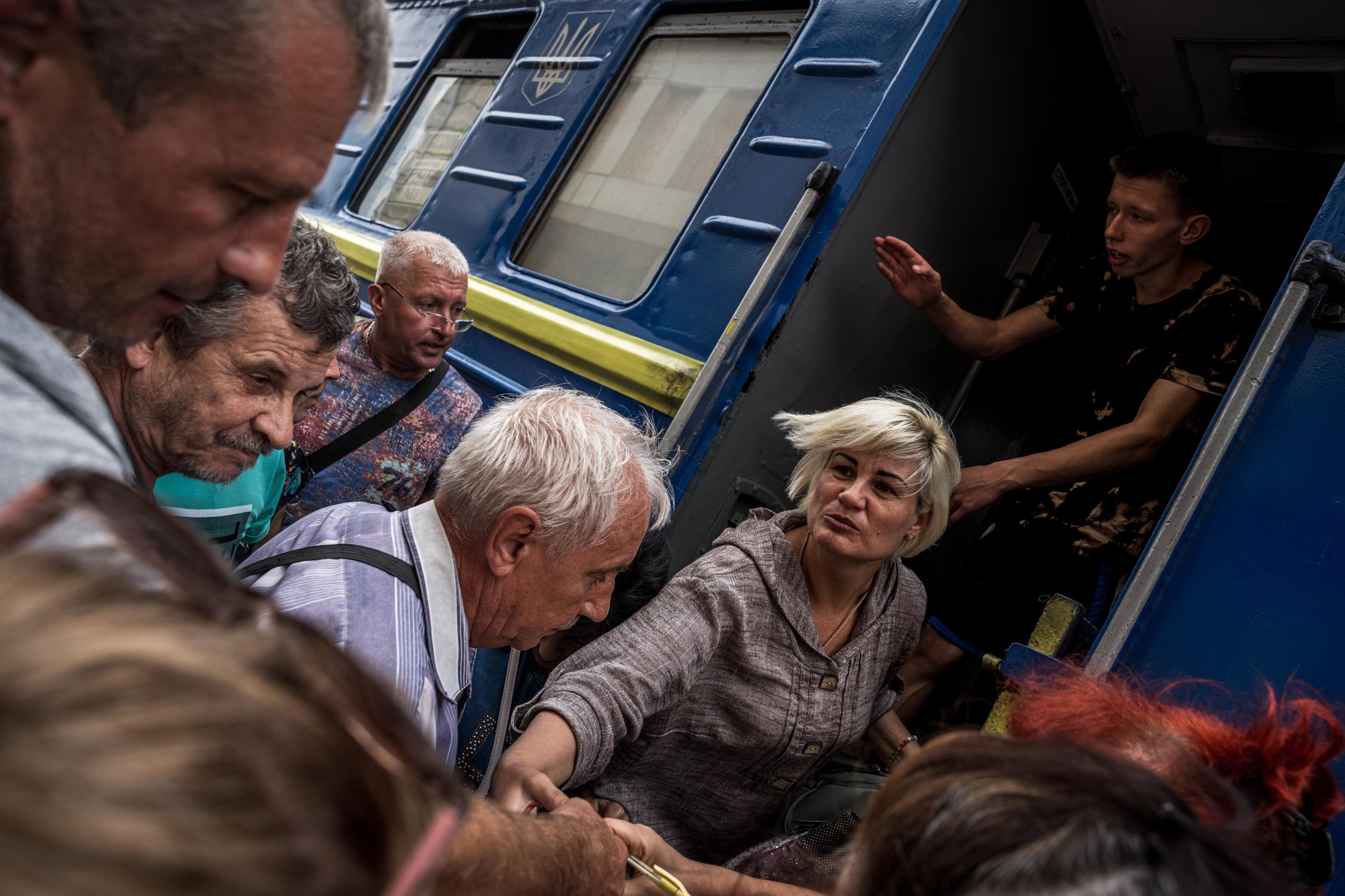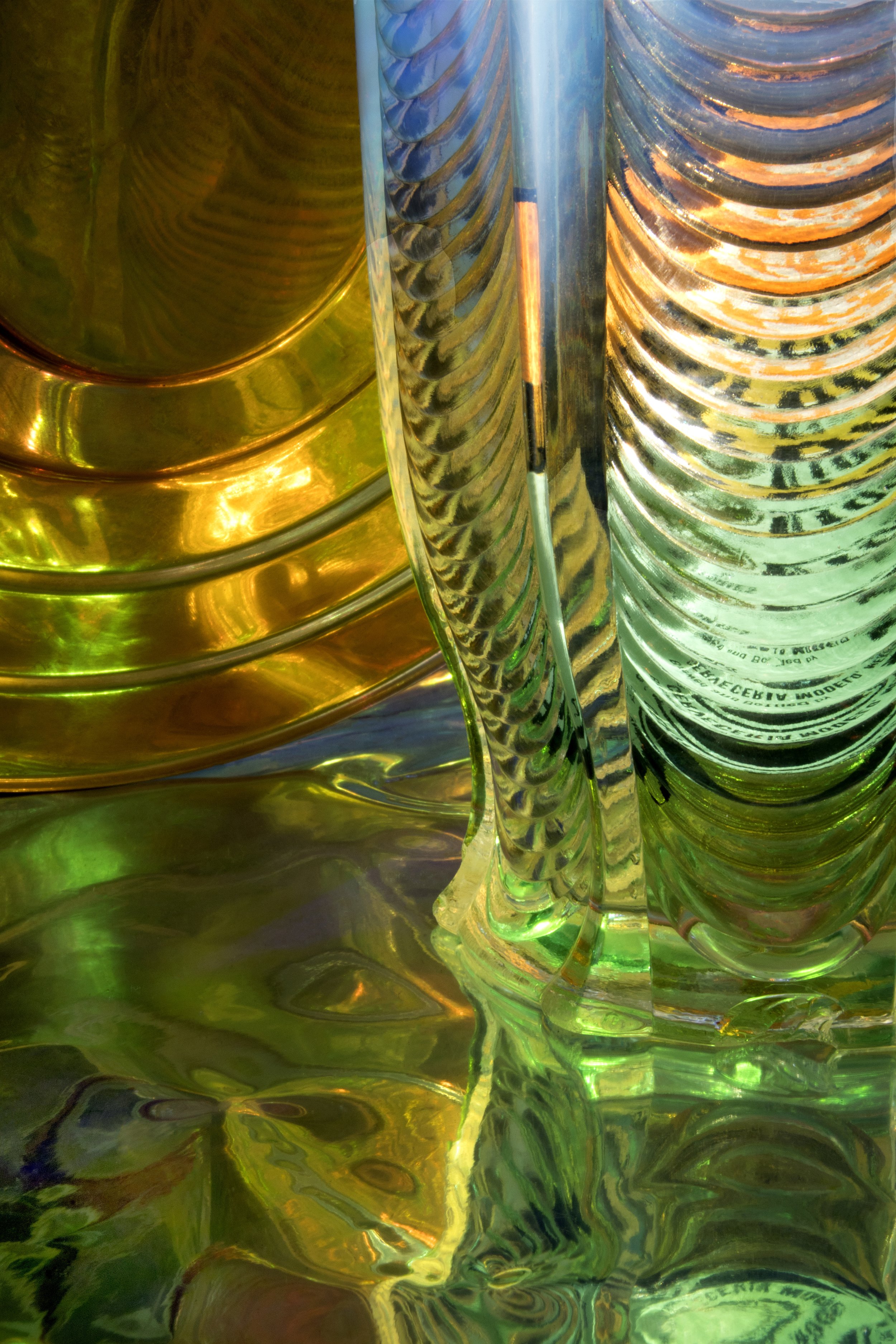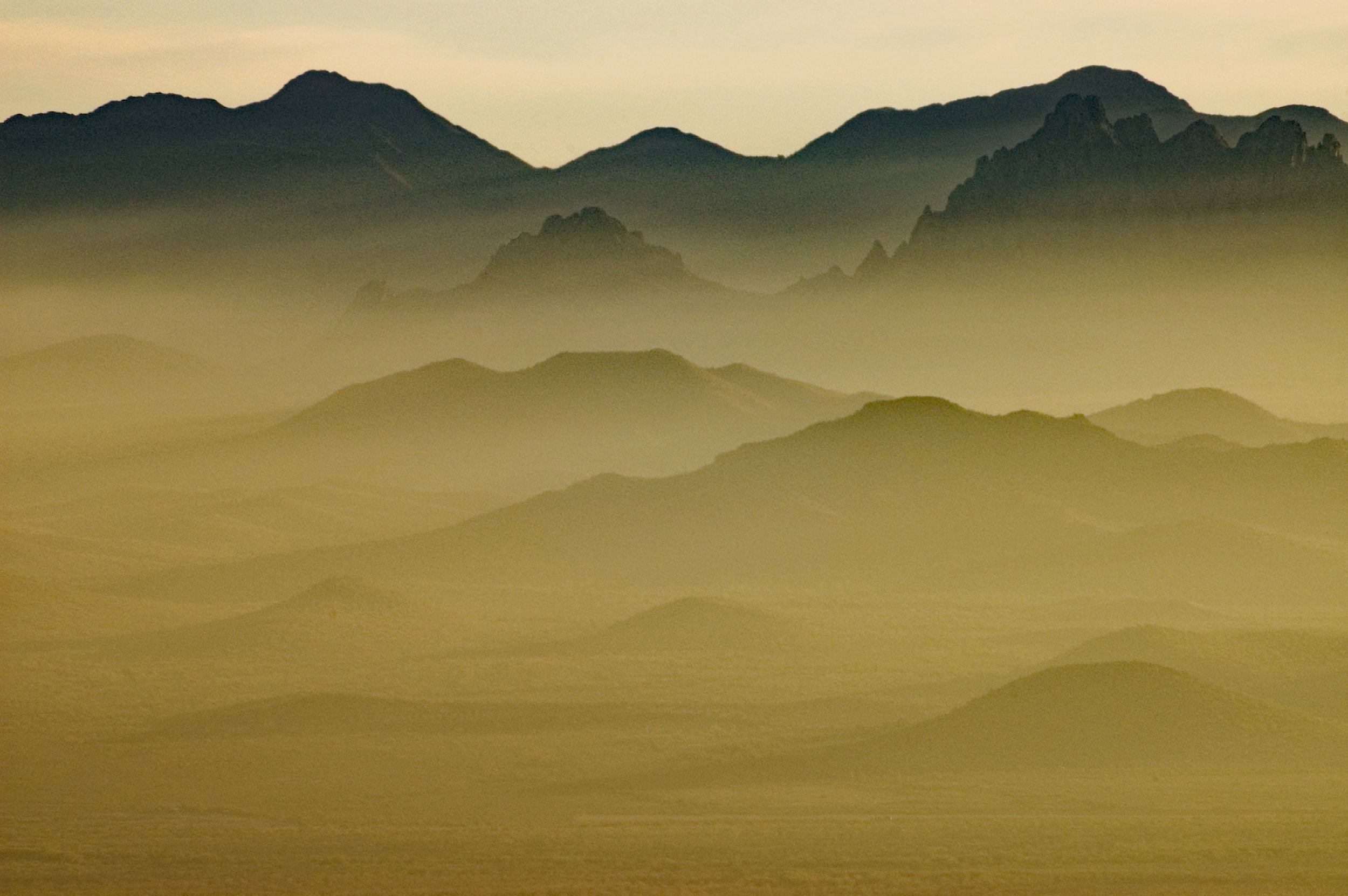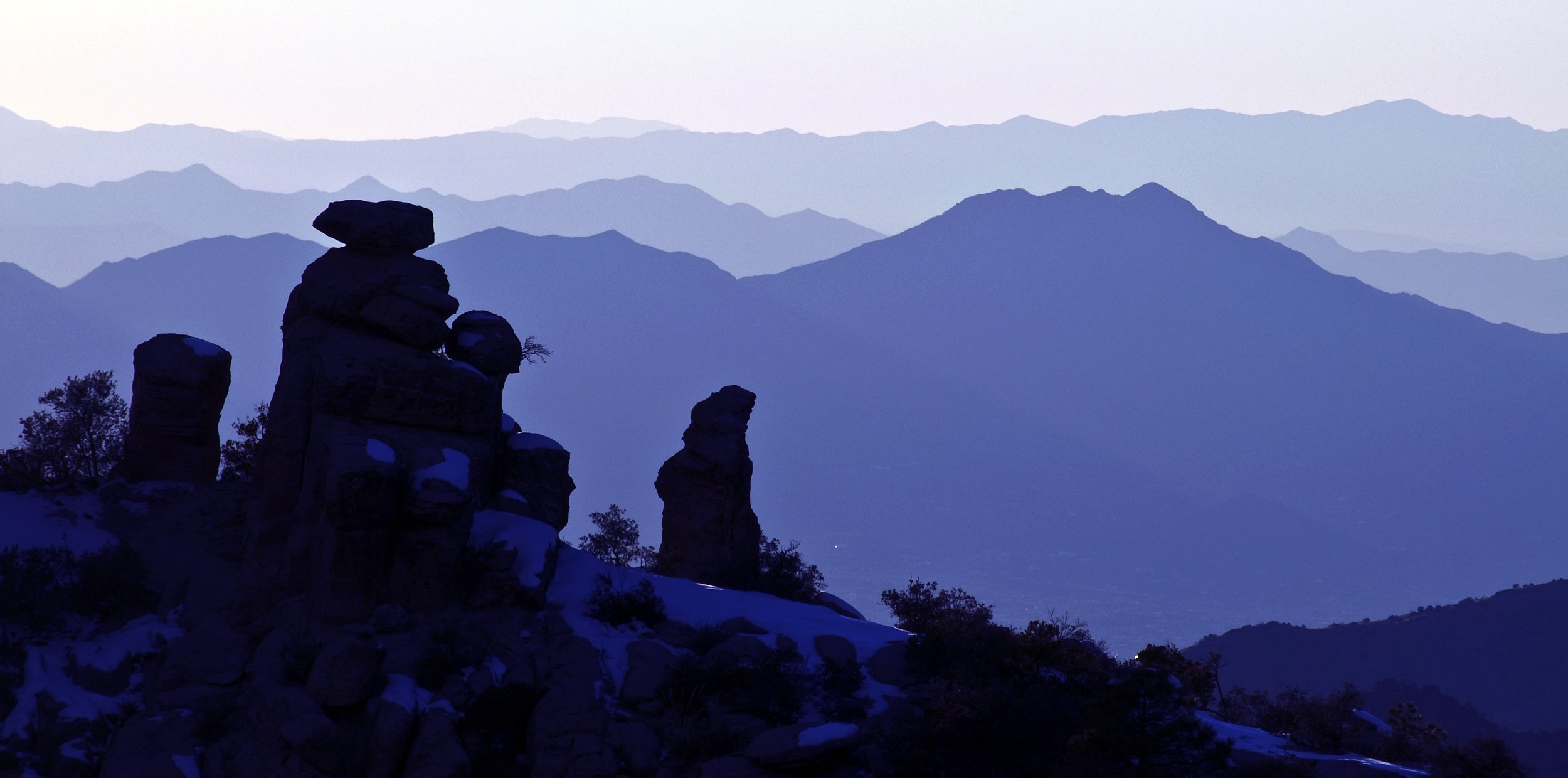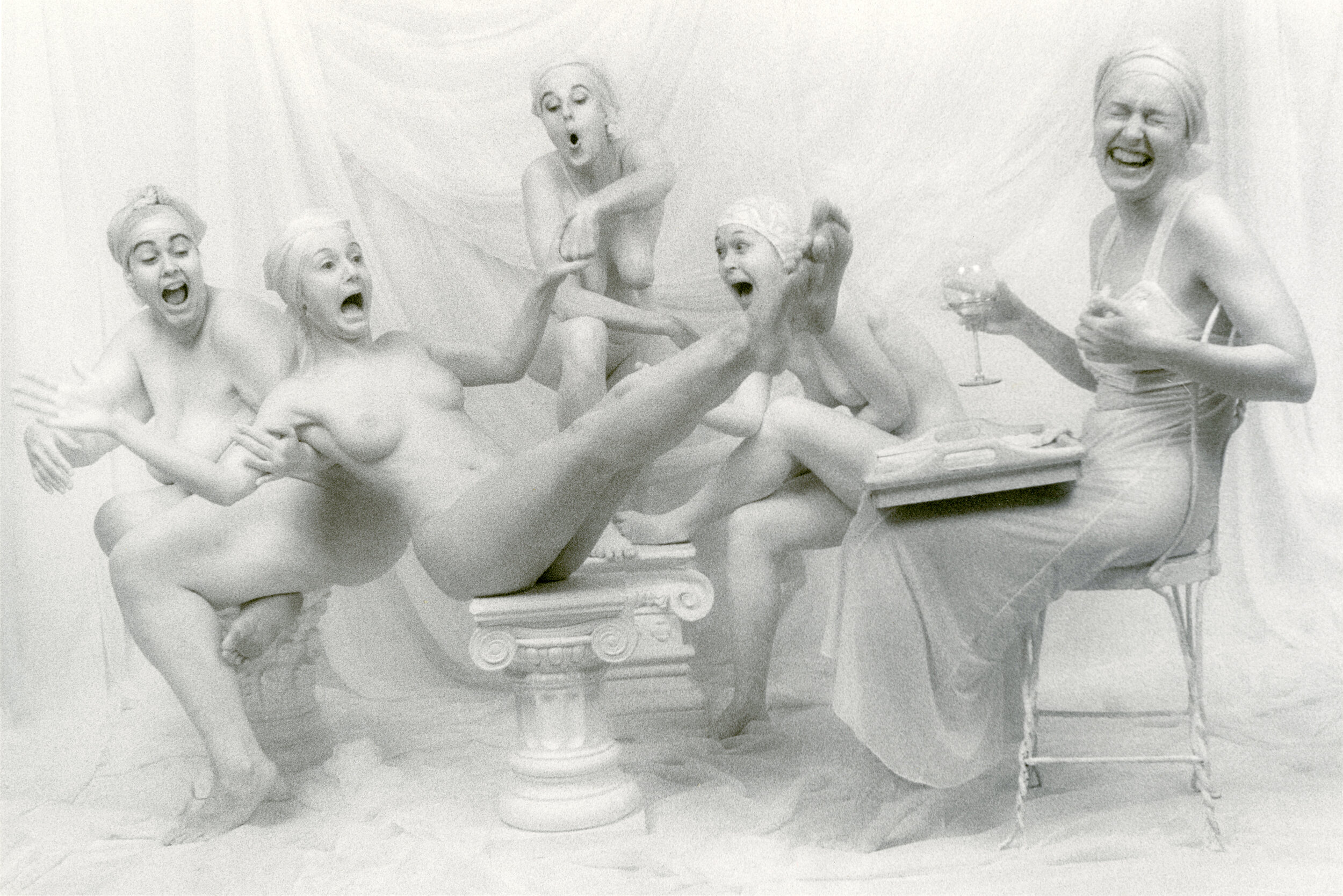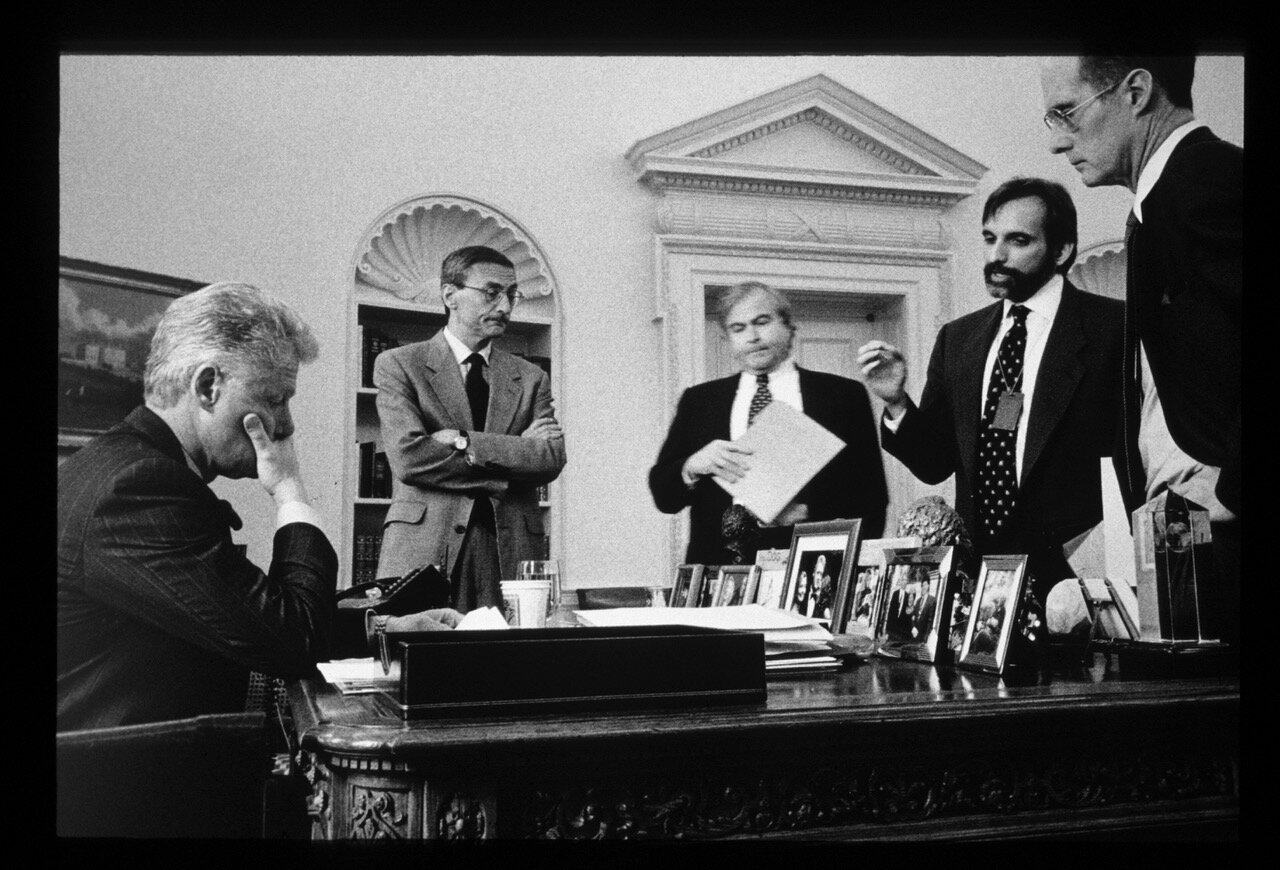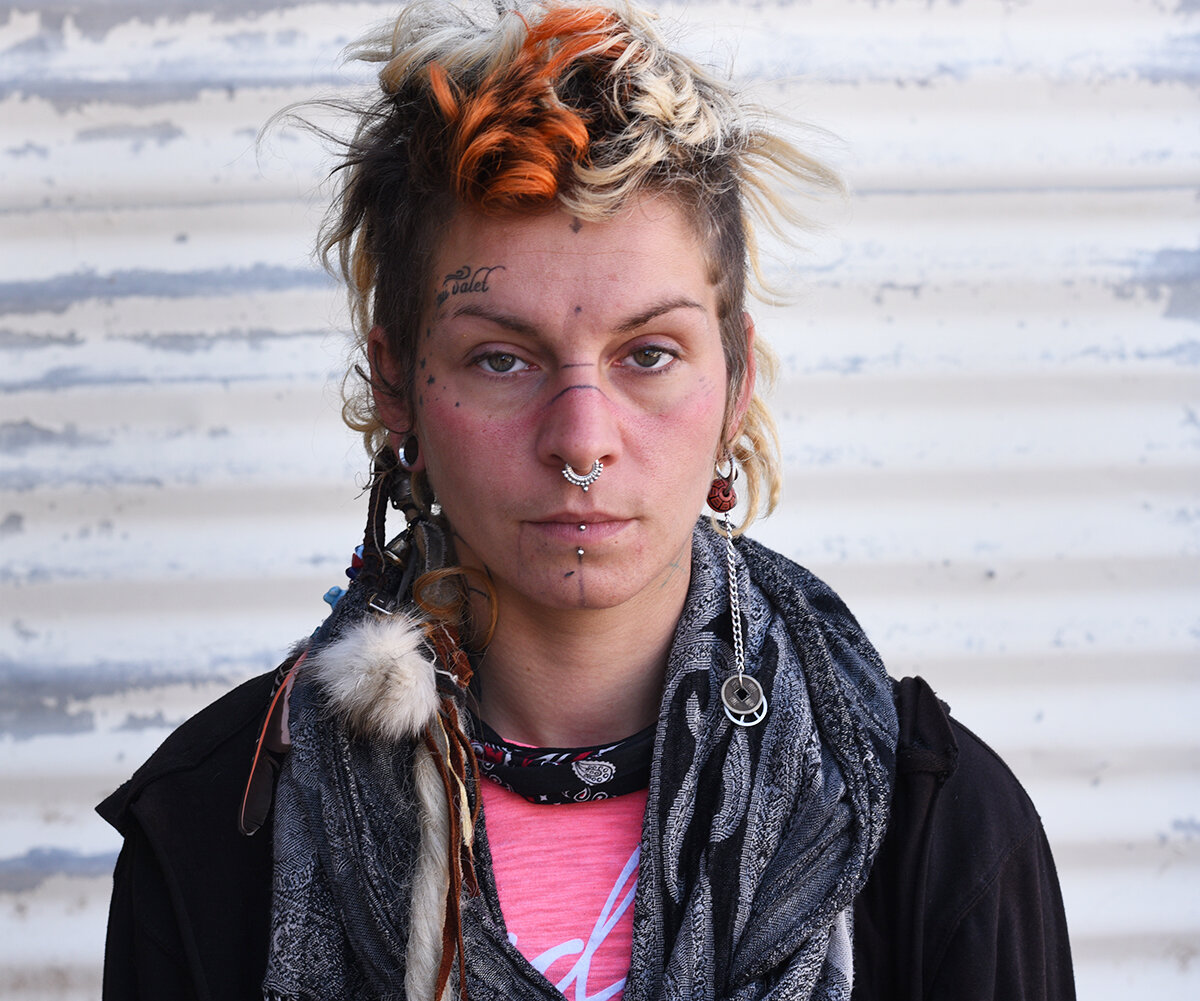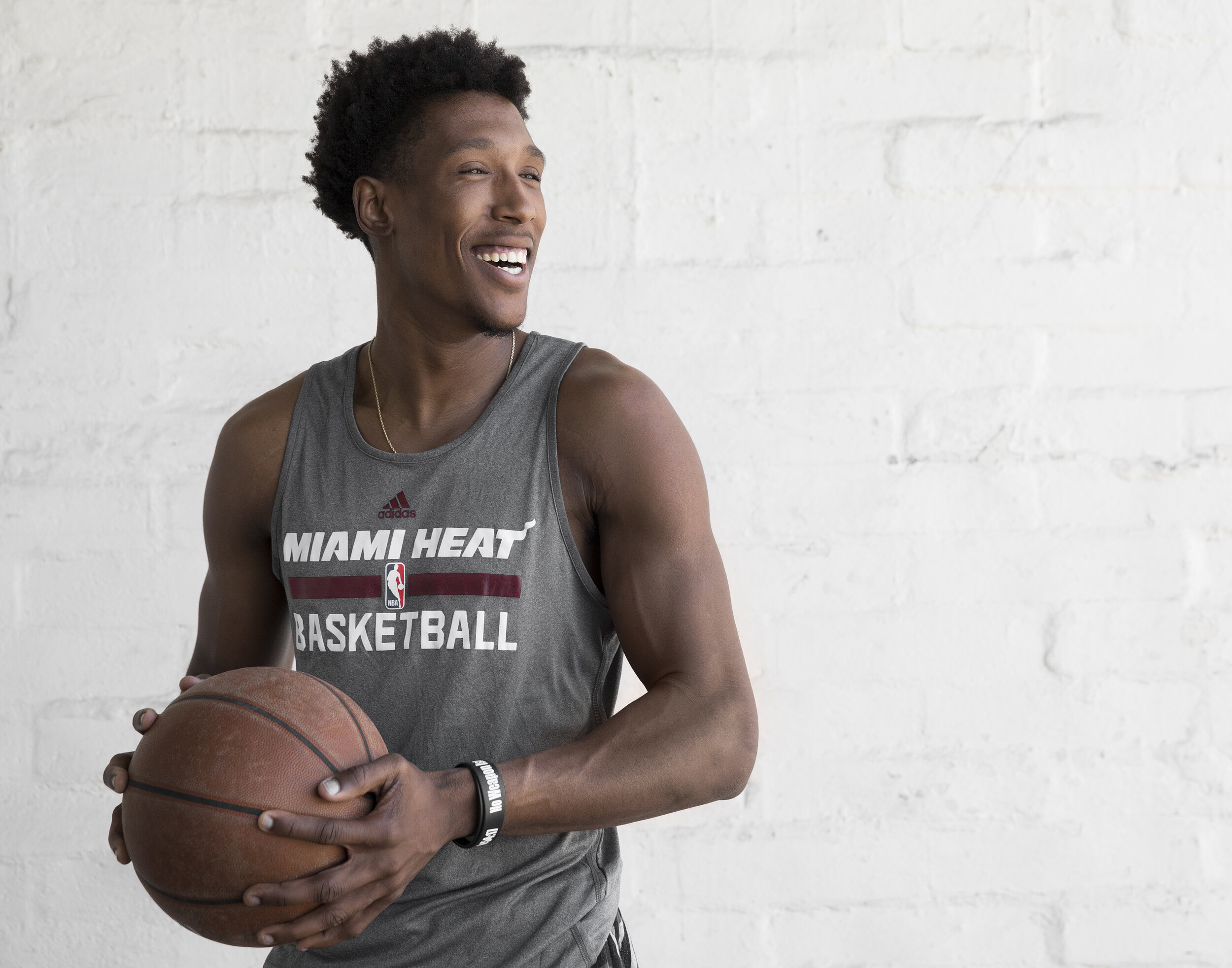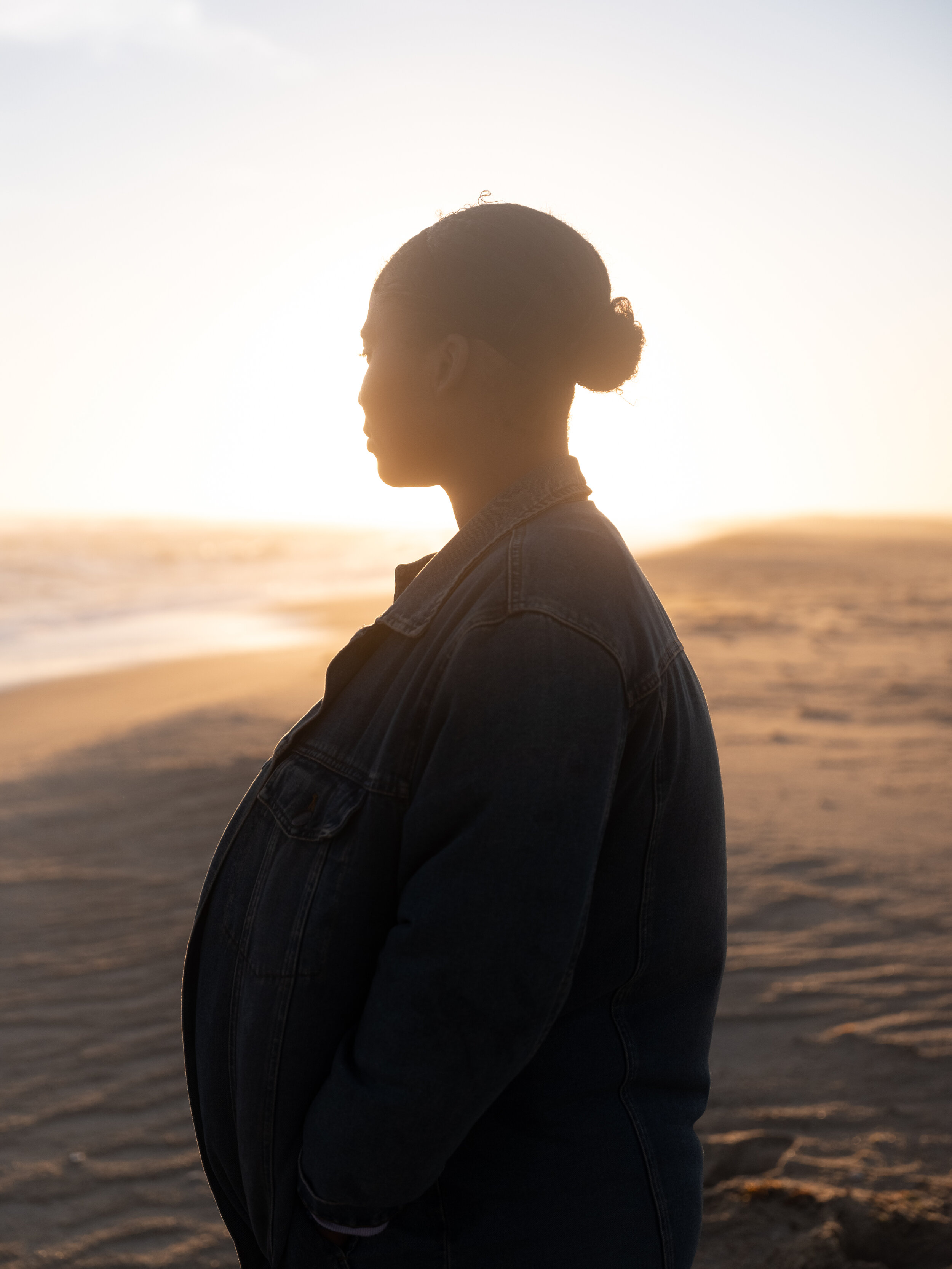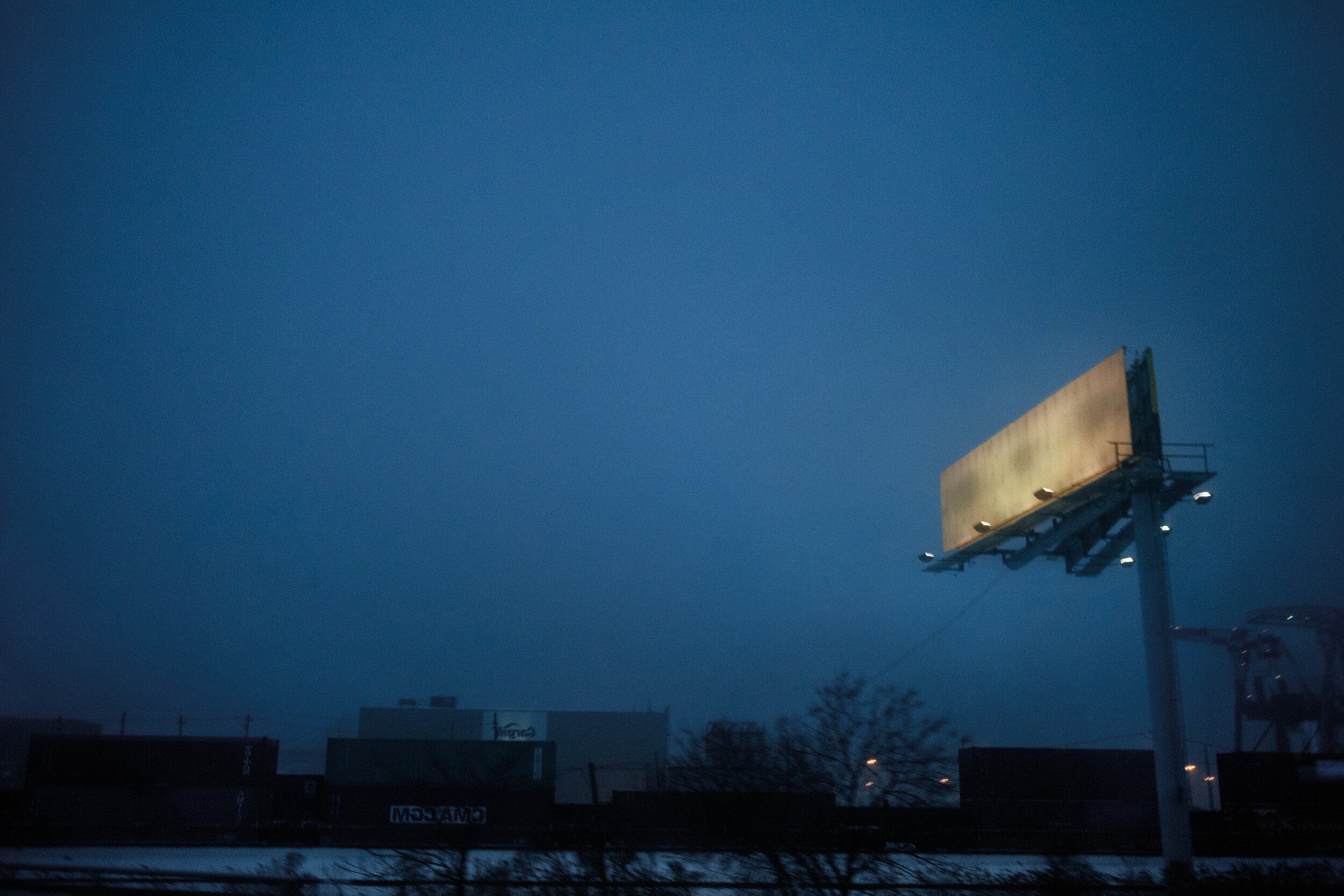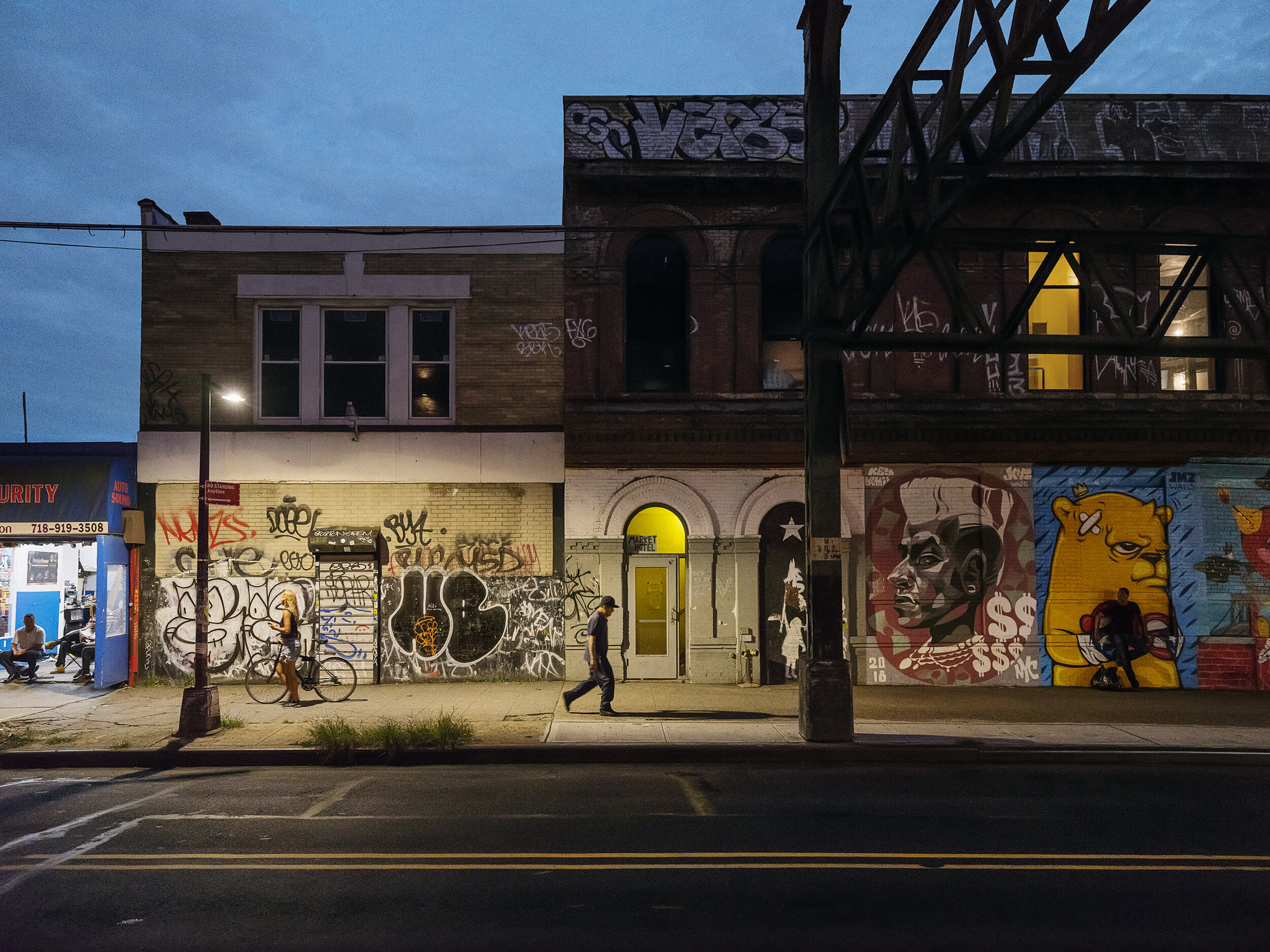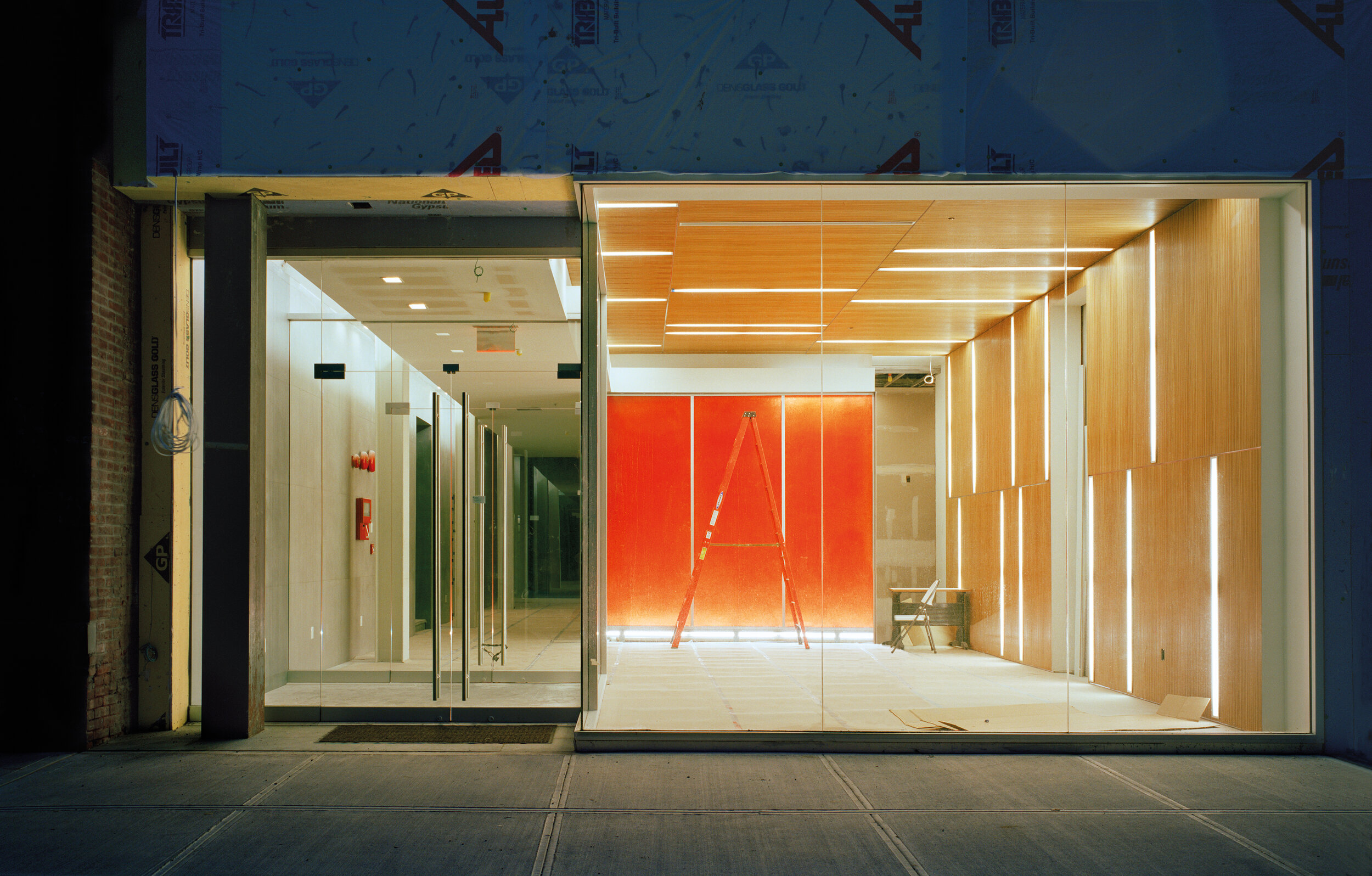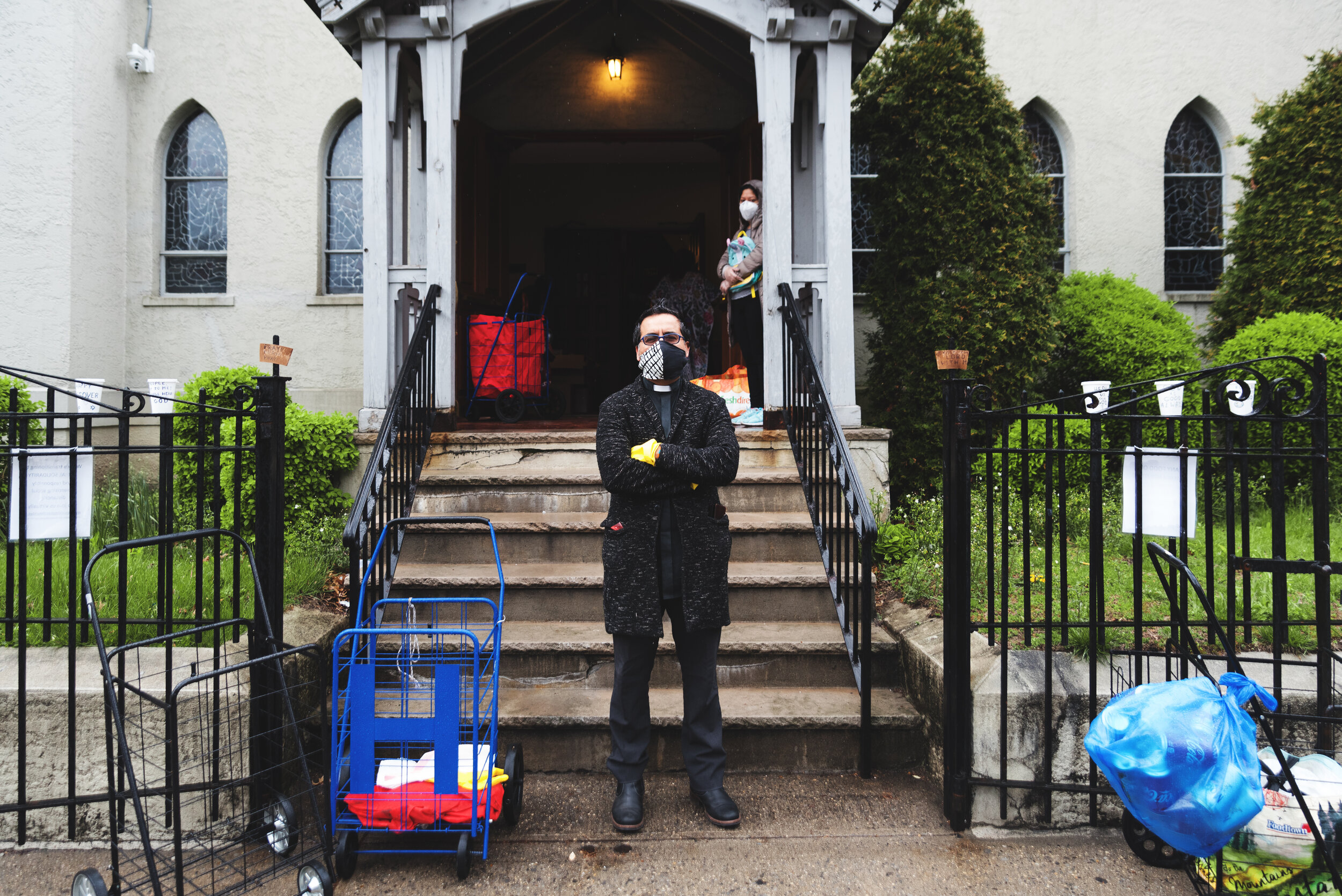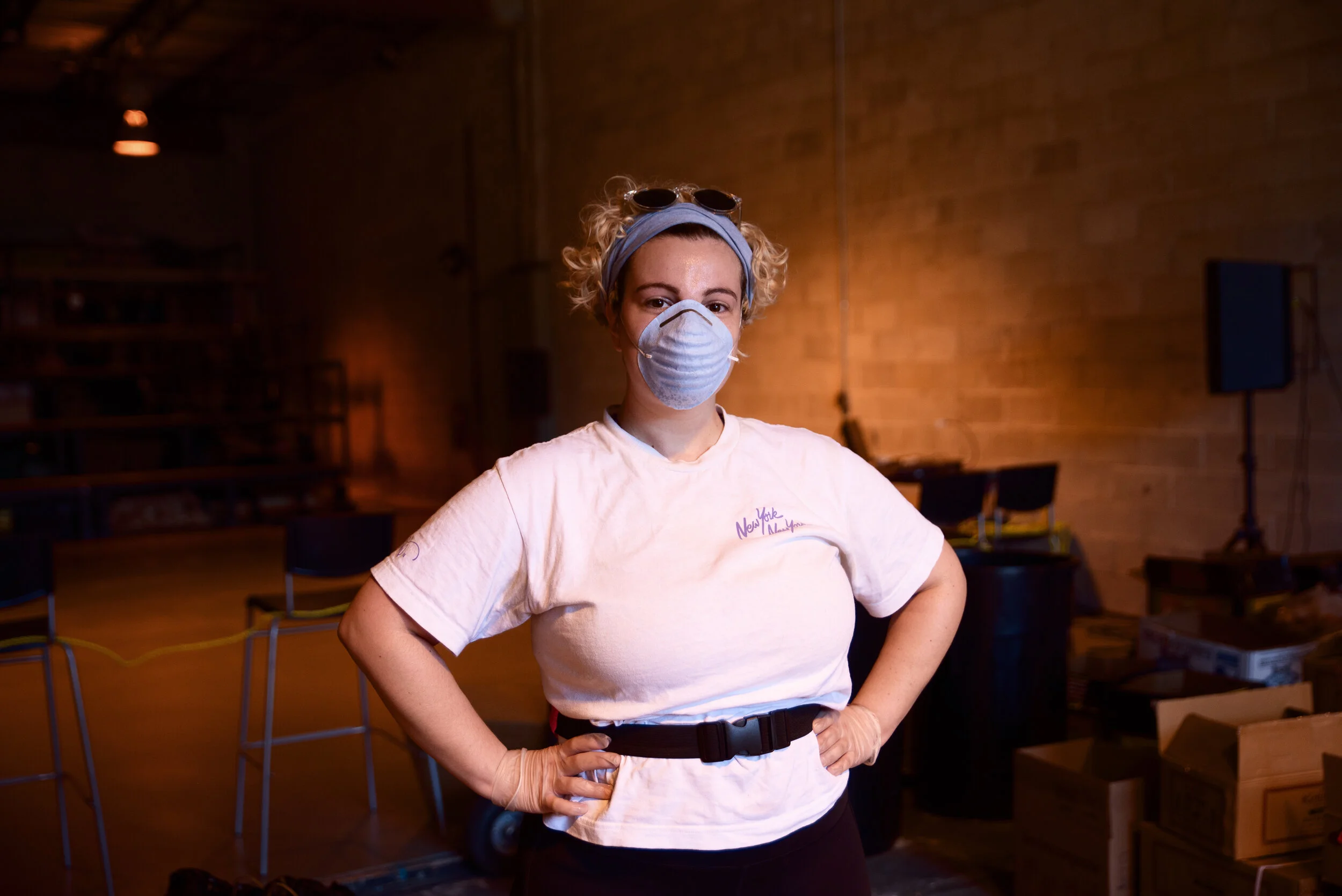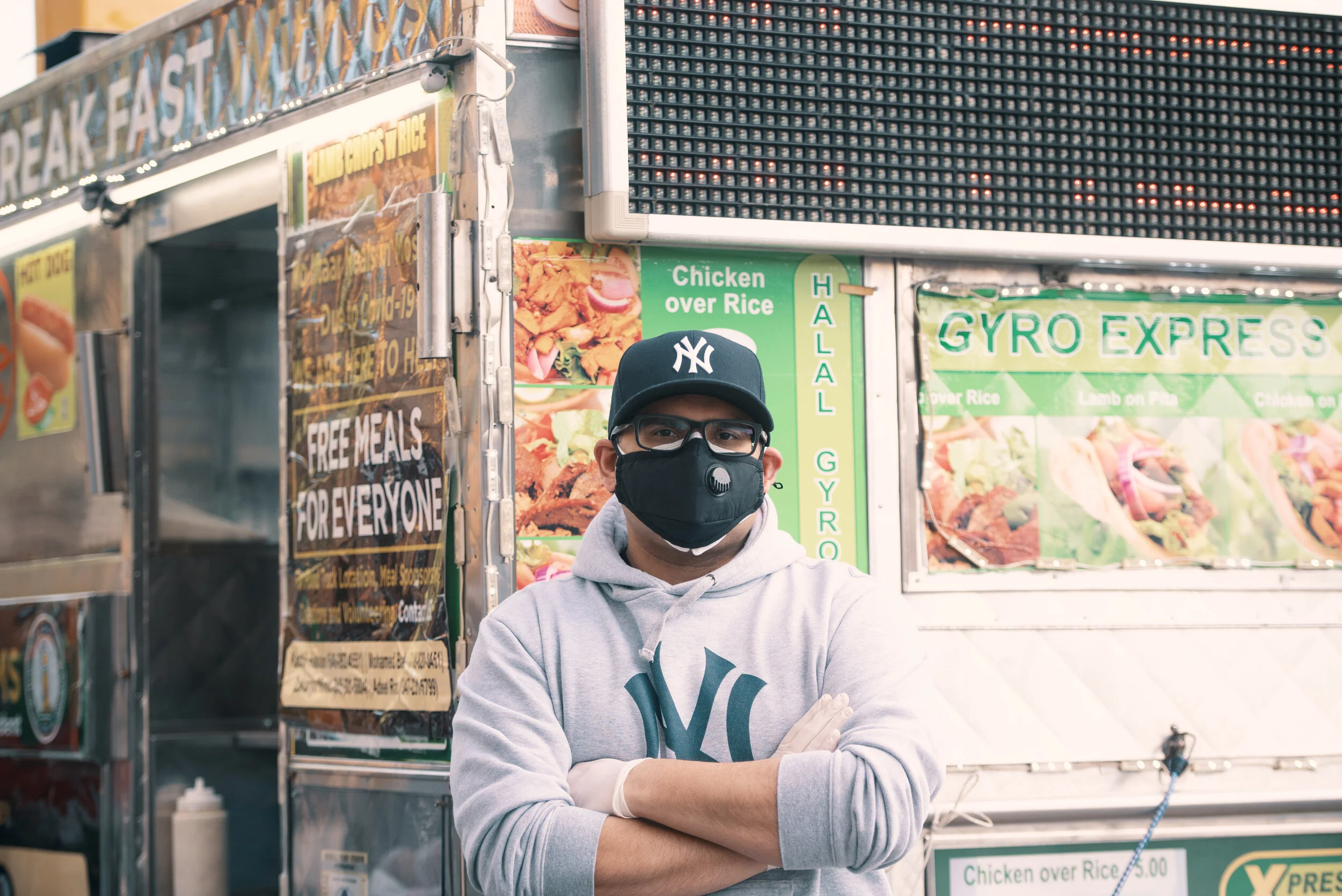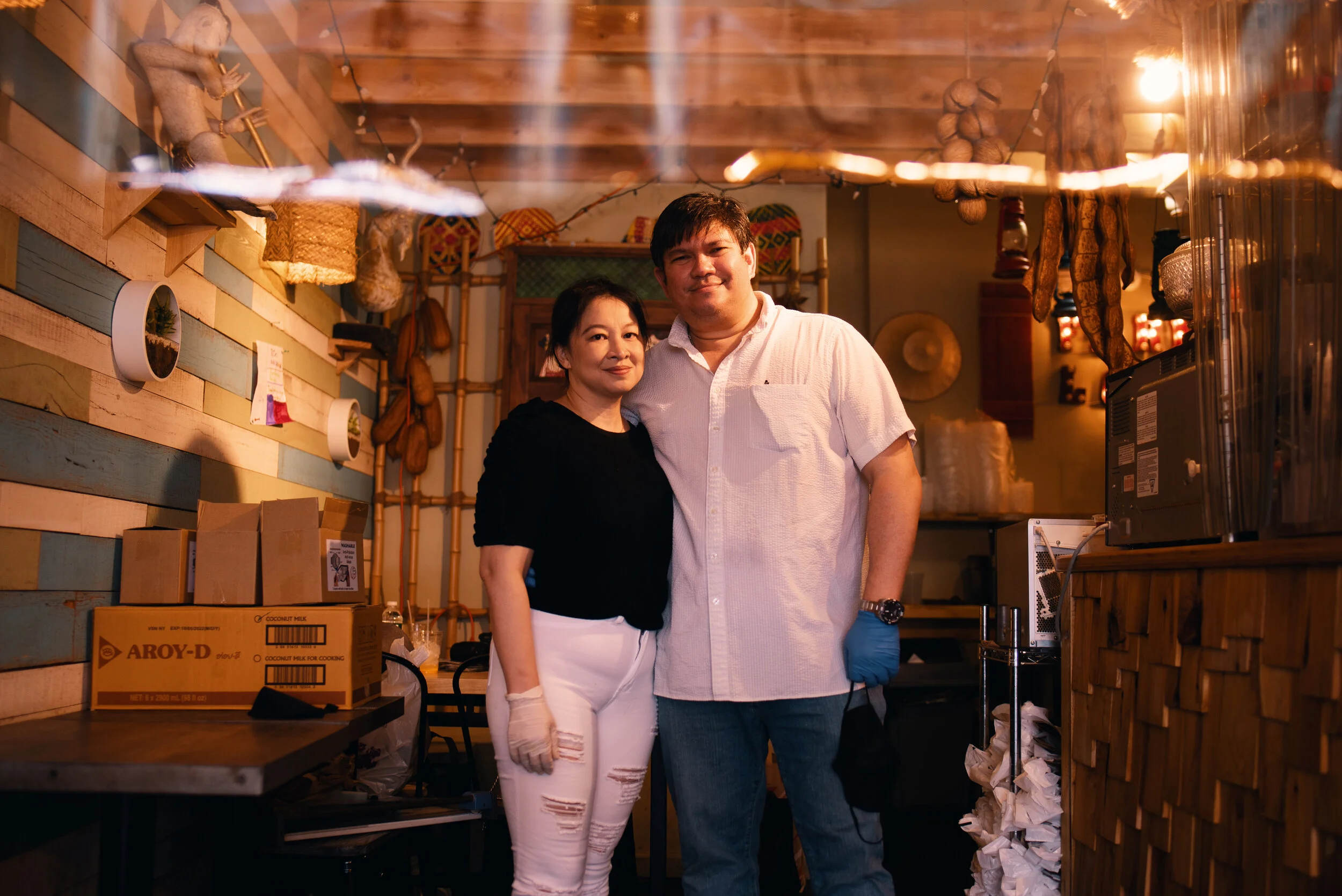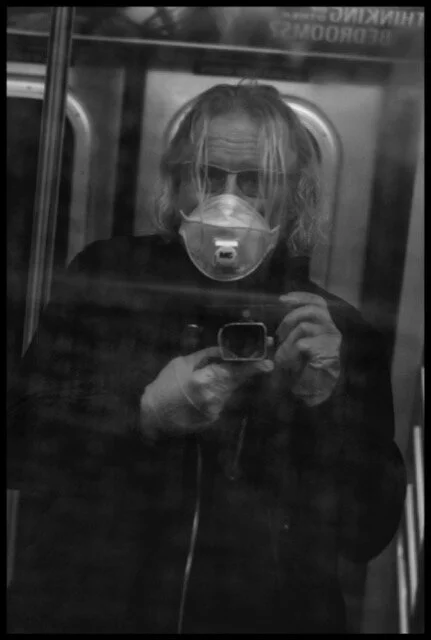







Julia Kochetova



Lauren Walsh, Joshua Lott & Rodrigo Abd
Rodrigo Abd
During the Corpus Christi mass in Lima’s main cathedral, Archbishop Carlos Castillo swings a censer, spreading incense before more than 5,000 portraits of people who died from Covid-19, Peru, June 14, 2020. At this time, more than 225,000 had been infected in the country. Photo by Rodrigo Abd/AP
Joshua Lott
A new mural honoring “Big Floyd” covers the back wall of Scott Food Mart near Cuney Homes, the oldest public housing project in Houston, Texas, June 9, 2020. Other community members who have died, mostly from street violence, are also memorialized on the corner store’s walls. Photo by Joshua Lott/Washington Post



Erin Karp


Bruce Byers










Alexis Holloway
PORTRAITS OF MY NEIGHBORS is a photographic documentation of “Voices of Lefferts: The Flatbush Community Writing Journal”, which recruits local residents in an effort to collectively tell the legacy and change of Flatbush/Prospect Lefferts Gardens, a neighborhood in Brooklyn, New York.
I follow the authors around their homes, on the streets of Flatbush, and to local markets, churches, and parks while they tell me their stories: how and when they got here and why this is home.
instagram @alexisholloway.space
Thank you!

Ashok Sinha


Molly Peters
Landfall
Drastic and fundamental change over the past year has rendered all aspects of the future unstable, and at present, it often feels like we are stuck in purgatory. Familiar scenes have been imbued with weight, carrying feelings of nostalgia while reflecting on remnants of what life used to be, or embodying the mystery of an uncertain future. As we move forward, the divide deepens between what was and what will be. Clarity on what the coming days and years will look like remains just out of reach. Personal events and the collective global trauma of recent history join together to create a perfect storm. Landfall references the moment when a tropical storm intersects with coastline. Personal and global changes converge, and control is relinquished as we surrender to the fates.
Biography
Molly Peters is an LA-based photographer who was born and raised on Martha’s Vineyard. She has an insatiable curiosity about the world around her; this drive to find new visual inspiration is evident in her photographs. Respectful, yet often mysterious or uncanny, her work deals with spirituality, memory, and human connection to the natural world, while reflecting a fierce protectiveness of the people and places she loves.
Molly completed a BA in Photography and Italian Studies at Bard College in 2010, and she earned an MFA in Photography from the Hartford Art School in 2018. Her photographs have been shown in exhibitions in New York, Los Angeles, Palm Springs, Boston, Hartford, and Berlin. Prints of her work are in a number of private collections worldwide. One of her photographs is part of the permanent collection of the Burchfield Penney Museum in Buffalo, NY. Her most recent photobook, “Rancho,” was self-published in March 2019. Publications include the Washington Post, Bloomberg Businessweek, Aint-Bad, ARRI, Pearl Press, Foundry Journal, and Humble Arts Foundation.


Katie Warren
Kate Warren will share images and process for her ongoing personal project, Loss of Central Vision. She is a native Vermonter based in New York and Vermont whose artistic practice explores the relationship between identity, secrecy, and mysticism through photography, writing, audio storytelling, and quilting.
Warren collaborates with clients that include the New York Times, Vanity Fair, New Yorker, Planned Parenthood, and the Smithsonian. Her photography has been recognized with awards from the Lucie Foundation, British Journal of Photography, PDN, American Photography 36, and Athens Photo Festival. She was a keynote speaker on feminism and photography during Apple’s StoryMakers Festival and FotoWeekDC, guest lectured at Georgetown University and George Washington University, and was named one of Refinery29’s 30 Under 30. She has degrees in business and writing and loves a good turtleneck.


Maggie Shannon
Extreme Pain, but Also Extreme Joy
After Los Angeles went into lockdown, I began following four midwives as they navigated new Covid-19 protocols. By photographing the midwives, I documented what it means to bear life in a time of sorrow and grief. While hospitals flooded with sick patients and banned partners from the delivery room, the midwives’ phones rang endlessly with calls from terrified women hoping to deliver safely in their homes. These women were determined to continue their essential work despite any fears or difficulties. In a time of global suffering, marked by separation and death, these stories of connection, care, and birth feel especially healing. Childbearing and the work of midwives is not well documented; this project presents labor stories in a real and unflinching way. It is crucial to this project to present a diversity of mothers and birth workers, not just a whitewashed version. This pandemic has disproportionately affected women, and this project illuminates some of the burdens they must bear.



The.Embodiment by BrakeThrough Media x Sarrah Strimel
The.Embodiment is a collaborative, long-term multimedia project by Iri Greco and Jim Fryer, the photographers of BrakeThrough Media, and Sarrah Strimel, founder of Damn Good Yoga, the project’s sole “subject” as well as its co-creator. The dominant thread of the project is a photo essay encapsulating the experiences of Sarrah’s breast cancer journey through its emotional and physical manifestation and evolution. While the project has emerged during the thick of the COVID era, photo access to Sarrah’s real-life doctor appointments, chemotherapy, and plastic surgery consults was completely restricted. Because of this, the creators decided to showcase these events through creative conceptualization and the impact they had on Sarrah in real time. The.Embodiment follows Sarrah as she discovers and observes the changes in her body, as her breasts become disengaged from the rest of her identity and her emotional maturity is catapulted into the future. As Iri once said to her during a shooting session, “I feel as though I am watching you grow from who Sarrah was into the woman you were meant to become 20 years from now – but it’s all happening in front of my very eyes.”
The. Embodiment is intended as a cathartic exploration for Sarrah personally, as she follows this journey, as well as a vehicle to share the most intimate and raw moments that other cancer pre-vivors and survivors could relate to and take inspiration/comfort from. For the photographers, Iri and Jim, the project has provided a concrete way to support Sarrah as friends and colleagues – allowing them to offer what they do best, capturing her at her most vulnerable and, yet, most profoundly superhuman. It is this gift they are able to provide during a year of unprecedented loss for so many. It is a way of celebrating life and the fight to keep it.


Michael Berman
Since moving to New York in 1987, Michael Berman has shot street photos and documentary projects that reveal the honesty and hypocrisy of everyday life. His current project is a documentary film featuring a group of strangers he photographed in Manhattan in 1999. In it, they look back on a twenty year era of unprecedented societal change with personal reflections, insights, and even a few life strategies.


Eileen Lerner
COSMIC BEAUTY “ A GRANDER VIEW”
Surreal Imagery inspired by Man Ray. To make us dream of other worlds existing within and beyond the boundaries of imagination.
Always aware of how photographing becomes a magical act..the appearance and the changes, that I as a photographer can construct, I love photographing because of this moment of change. Visually aware that to concept is one thing and alchemy process another. That the surprise element is ever present whether from a gesture, or an emotion from a model, the light from a source, or the added element of the digital darkroom. I like the surprise from what becomes. My favorite artists are ManRay and Matisse, and each time I view a work of either, it is savored memory, and again a striking newness that moves me.
Enclosed are Photographic Images which I would like incorporated into a show. The series I have photographed in different mediums and I have digitally enhanced them to look deconstructed, and solarized. I chose not to solarize every image I take but feel that the ones that I do alter are transformed to another dimensionality. They stand as images on their own without added digital work, but as Man Ray, and other surrealists I love the aesthetic freedom. The over-process and defective development of light and dark giving an otherworldly vision.
Man Ray’s muse lends itself to my inspiration of Man Ray and Lee Miller’s creative cycle. I hope to honor them.
I like the way the deconstructive process creates a new meaning to my images, and I hope the viewer gets the sense of anticipation, that anything can happen in this world of unbound realities.
Nothing’s perfect and time will never be the same, and so I change, and so do my images, altering them to the transition between the surreal and the moment. I focus on beauty, in art and nature as if one. The line of a body is as important as the ghostly movement of tulips in shade.


Lynn Saville
Lynn Saville will show selections from her color photographs that capture the urban landscape during the transitional periods of twilight and dawn. Published in four monographs and represented by the Yancey Richardson Gallery, her work portrays a city devoid of people, except perhaps for one or two stray pedestrians, and dreaming its own dreams.
Thank you


Eric Draper
Eric Draper served as President George W Bush’s chief White House photographer for the entire eight years of his presidency. Draper was named Special Assistant to the President, and is the first White House photographer to be named a commissioned officer to a U.S. president. Also during his tenure, Draper directed the photographic and archival conversion of the White House Photo Office from film to digital and took nearly 1 million photos documenting the presidency.
Prior to joining the White House, Draper was West Regional Enterprise Photographer for the Associated Press. In eight years with the AP, Draper covered an array of domestic and international news and sports. Draper has also worked as a staff photographer for The Seattle Times, the Pasadena Star-News and the Albuquerque Tribune.
Draper is currently a freelance corporate, and editorial photographer based in Rio Rancho, New Mexico where he lives with his wife and three dogs. He is an obsessive LA Laker fan.

Burroughs Lamar
In 2008, I became interested in photography on serious level because of what was unabatedly transforming Harlem, and the attending palpable fear that gentrification would displace the most storied black community in the United States. Harlem is where I was born and have spent the majority of my life and still make it my home. So, out of this circumstance, I decided to do something about it rather than watch it happen.
There was one caveat that I imposed upon myself: if these people were to allow me into their lives (some personal), I would not betray their trust by profiting financially from using their images.
The project grew with each person, business, activity, event, or happening I chanced upon. The next phase was strategic: I decided to use my relationships with everyone I knew in Harlem who could connect me with someone or something I wanted to document. Over 12 years later, I have amassed easily over 70,000 images, (that I continue to add to)
In the project’s infancy, prior to having a conversation with now deceased, Dr, Manning Marable, a scholar at Columbia University, the import of what I have achieved from an anthropological and historical framework, was hitherto unknown to me. my photographs are instrumental towards addressing negative stereotypes of black Americans that needed to be challenged. Hence, the work augments the central thrust of the Black Lives Matter movement, which is black people in the United States are treated unequally and current wrongs need to be addressed.


Donna Ferrato
Donna Ferrato All I ever wanted to do is unleash the feminine spirit. I am a woman with a camera. I choose where I walk. I pick whom I walk with. I am the maker of my photographs. This is my credo. As I see it, my mission is to cut out the noise and listen to women. Believers. Non-believers. Young. Old. Cis. Trans. Living. Dead. Follow the flickering of unleased bright spirits. That’s what pulls me like a moth to the light. My new book, HOLY, is built on the strength of the other holy trinity—the mother, the daughter, and the others—who believe in women’s rights and fight for them. I look forward to sharing my journey and the stories of remarkable women’s will to survive with you.


Zave Smith
For over thirty years I have been a commercial photographer who seldom did news, editorial or even street photography. When the virus hit and we hid inside our homes and when the clients stop calling, I had to ask myself, what should I do?
After spending six weeks in lockdown. I ventured out to see what was happening in the greater Philadelphia area. What was it like to be working during these nervous times? What was it like to try and re-open a business? What were the retail, restaurant, security, factory, and construction workers experiencing?
Back to Work is a document of what I found.


Olga Torrey
Originally from the eastern region of the Ural Mountains in Siberia, Russia, Olga Torrey has been living in New York City for the past 27 years. She is a fine artist and Life member of the Art Students League of New York.
Olga is an avid scuba diver and underwater photographer. She has taken her talent as a fine artist, and applied her skills to photography both above and below the water. When not diving, Olga is documenting the beauty of NYC streets. She has been published internationally.
www.fitimage.nyc


Lavonne Hall
The first project, Correlations: NYC is based on the belief that one’s sense of self is deeply influenced by the localities one visits. These are photographs of some New Yorkers layered with content that they are connected to in one way or another. This project will continue with Boston as its next location.
The Sleep Deprivation project is about exploring the possibilities of why I can’t get a good night’s sleep. It’s a combination of photos of me at bedtime along with the graphs that depict my sleeping habits. I’m confident the longer I explore and experiment with this project, the more my sleeping habits will improve.
#LavonneIsEverywhere


David Lykes Keenan
My first love is street photography, in black and white, using a small, unobtrusive rangefinder camera. People, usually random and anonymous, are essential elements of these photographs. My preferred method is to see, photograph, but not be seen.
My inspiration comes from the photographs of Henri Cartier-Bresson, the godfather of street photography and the American photographers Eli Reed, Elliott Erwitt, Mary Ellen Mark, Lee Friedlander, Richard Kalvar and Garry Winogrand.
Photography projects have included a book of street photography entitled "FAIR WITNESS: Street Photography for the 21st Century" released by the Italian publisher Damiani Editore in March 2015, a street portrait series called"LOOK At Me", a photo essay on the war ravaged Croatian city of Vukovar which resulted in a book published in the UK, and a journal of European pissiors which became a book entitled "PISS".
My Picture-A-Week (PAW) series was published continuously to my website between 2007 and 2016 -- and recently restarted for 2020 with the introduction omy new "dlkphotography.com" website.
www.dlkphotography.me


Kirra Cheers
Despite the fear and anxiety, I felt like this was an opportunity for me to produce a body of work that spoke to the moment. I create work that studies sexuality and connection within a modern world. ‘Seclude in the Nude’ is my documentation of intimacy during an unprecedented period of isolation. The images capture a need for people to feel seen and connected to one another despite and because of the necessity for social distancing. From a personal perspective, it can be hard to be creative amidst so much uncertainty. The project has given me purpose and structure as the days have a tendency to blur together. Connecting with people in this manner has been a surreal experience that I feel is reflected in the images. I hope that the body of work serves as a time capsule to remember this moment in history.


Jordan Rathkopf


Robert Gallagher
Robert Gallagher is a Los Angeles based editorial photographer. Born in London, he’s best known for his portrait and reportage work. “Authenticity may not be the first word to come to mind when thinking of Los Angeles. However, Robert Gallagher’s focus is just that, and no matter what his subject is, his aim is to evoke the truest essence of the subject and capture it as it is — real, raw, and deliberate. Gallagher does fantastic celebrity/portrait work, but no matter what or who he’s capturing, the texture and feeling that ripple through each image remain the same — unflinchingly genuine, laid bare and honest.” -Peerspace.com
www.gallagherphoto.com



Paul Aresu
This project is called COVID-19 HEROES. Shot during the height of the pandemic and still continuing. I have visited 5 Hospitals and many Manhattan ICON locations including subways, Grand Central and the Occulus. I have photographed Policemen, Messengers, Nurses, Doctors, Patients, and other essential workers. Enjoy!!!
www.paularesu.com


Carol Dronsfield
With my studio closed indefinitely by the lockdown, I’ve found myself on the streets of New York City, gloved, masked, and camera in hand.
The city presents a strange alternate version of itself to my lens: urban landscapes deserted as a dream, eerily quiet, seemingly abandoned in haste at some arbitrary moment in time.
I hope these images will soon be curiosities, once-in-a-lifetime scenes receding into the past.
I hope this version of the city will be fleeting.
In the meantime, this is the city I see.
https://caroldronsfieldphotography.com/

Kevin Steele
Life on Pause.
A personal project documenting life in quarantine. The new normal. Shot through the front door, being safe,
Into the space of self-isolation
Revealing life apart and together.
Since March 15th, shot with one camera & one lens.
This is a small set of the full collection of 70 individual portraits/scenes shot in Los Angeles.
On Instagram: @life.onpause

Timothy Fadek
This series of photographs, Virus City, resulted from prowling the empty New York streets and subways, photographing medical staff at the hospitals, visiting the morgues, funeral homes and cemeteries, and generally following the news arc of the pandemic as it unfolded. As of this writing, the SARS-CoV-2 virus has infected over 200,000 New Yorkers and killed over 16,000.


Karen Zusman
The Beauty, still. I have always loved my city, but never more than now.
Visual stories from the first 6 weeks of the pandemic in Brooklyn, NY.
I think the gravity of the situation truly hit me in early April when cycling on 2nd Ave in South Brooklyn. I saw a long, rectangular wooden box propped up on an accordion stand on the side of the road flanked by two large, white trucks. I remember riding by and wondering: Could that be a coffin? Could those be refrigerator trucks?
There was a hospital nearby and while my images aren’t great due to the distance I kept, I will never forget the feeling that shot through me when I witnessed patients being brought in, their hands gripping tightly the hands of the EMTs.
Each day after I stopped by the hospital, I continued on to the Verrazano Bridge area—the glorious expanse of waterfront between Bay Ridge leading up to Coney Island. Once ordinary human gestures took on a lyric preciousness to me. The beauty was a bittersweet balm, there was a delicateness with our newfound vulnerability; people, bridges, puddles, pigeons and trees appeared to shimmer, and everything lost its solidity. Of course, it was the clear, early spring light. But it was also something else; something I know I’m always searching for, yet always so hard-pressed to name.

Drew Gurian
www.drewgurian.com

Peter Turnley
New York City-which has been the epicenter of the coronavirus in the world these past two months-is a city of human beings-each with a name- an age-each with a life experience-each with a family that cares about them-and all, like each of us, are much more important than statistics, peaks, flattened curves-they are the heart and soul of this moment-and the heart and soul of our moment.
While these images and stories are from New York-they are in solidarity with every country in the world and every person in the world-all who have been in the middle of this war-truly a World War with an invisible enemy. Our human family worldwide finds itself in the middle of this crisis. This visual diary is also, our story.
Since the beginning of the coronavirus crisis in NYC, I have gone out most days, with my camera and notebook, always keeping at a careful social distance with all people, wearing a mask and gloves, and return to where I stay, alone. It is essential that at this moment in our collective life, that the stories of so many heroes and victims, of all dimensions, be documented, helping to bring us together now, and for memory, forever. With love.

Travis Keyes
I was recently asked in a Sony Alpha Photographers’ podcast – “if I could shoot anything right now what it would be?” I paused and said if it were a mere month or two ago, it would have been an exotic location shooting some big cinematic grand portraits. But now I just wanted to connect with someone and shoot portraits. The second question was “what I missed the most.” Once again, I had to think and said getting lost as a child in the world of television. It was were I use to go to escape.
As a portrait and world traveling photographer, Covid-19 took away my subjects, my ability to travel and as the weeks went by I could feel the demons knocking on the windows. I was forced to look to my archives for images. I was influenced by those two questions being asked over and over in my head. Because of the darkness creeping into my thoughts I started pulling two series together. It was work I had yet to edit or show to anyone. and thus, was born Uganda City of Lost Children | Death Row Orphans and The Golden Age of TV .

Iri Greco
Seasons of grief is a personal project by Iri Greco.
What began as a farcical exploration of safe-distancing in this new and surreal Corona reality quickly expanded into more personal themes of mental health, identity, and the search for daily meaning in self-isolation.
Weaving together elements of character play, social collage, and graphic emotions of solitude and discomfort, Iri seeks to better understand the personal and social impact of her confinement and how we will all emerge from this erratic period. The project has evolved into four stages, or seasons, of loss – the initial pop-culture vibe of “social dissonance,” to the darker confusion of ‘untethered,” emerging in later weeks into the outside world as “witness” searching for human connection, and culminating in the quiet new daily rituals of home in “presently absent / absently present.” Created between time upstate – with her mom for whom she regularly cares for and who also struggles with depression and anxiety – and her native Brooklyn, her goal is to connect with the deep unease of loneliness, confusion, and emotional stress that many of us are dealing with individually.

Charles Chessler
Faces of Zoom
Faces of Zoom is a portrait project by Charles Chessler born out of the new Covid-19 reality. While chatting with a friend on Zoom he asked her if she would take a screenshot of him and whether he could take one of her. Charles realized that the best camera he currently has with him is the PrintScreen button on his keyboard. The project is giving him purpose and connection and the much needed opportunity to be with people in real time.


Claudia Paul
LOVE IS... is a personal project by Claudia Paul. The idea was born out of Claudiaʼs desire to celebrate something truly positive in a world often filled with negativity and depressing news. Claudia photographs couples at her Chelsea studio who found real love and radiate that energy. She hopes to capture that authentic connection between each couple. Love comes in all sizes, shapes and colors! LOVE IS... hoping to increase acceptance and show that all LOVE IS equal. The project will be continued when it is safe to do so again.
The second part of Claudiaʼs presentation will talk about her current work. Shortly after Covid-19 started to take over our lives, her longtime client Mount Sinai called Claudia to document some of their efforts in fighting this pandemic. This work so far has been very rewarding for her, she hopes to shine a light and thank all the healthcare workers on the frontlines risking their lives every single day to keep us safe.

Kristofer Dan-Bergman
Kristofer Dan-Bergman is a multi award winning photographer (Graphis, Communication Arts, AI_AP, Applied Arts, Production Paradise, Creative Quarterly). His commercial work is mainly focused on people and includes campaigns for Clarins (Beauty), AT&T (Life Style) Kay Jewelers and Tag Heuer (Portraits). Kristofer’s personal work ranges from still life and nudes to conceptual art focusing on time and space and our consciousness
http://www.kristoferdanbergman.com/

Robert Whitman

Many people first pick up a camera to record their passions whatever they may be. But sooner or later, the best of them find that photography itself is their real passion. That's true of Robert Whitman. Along the way, he found not just a pastime, but a way of life. As a free spirit traveling the world after college, Robert found that with his camera he had entree to people and places he never would have encountered. He's been on a life long journey of discovery ever since, with stops in Brazil, Cuba, Punta del Este, The Alps, Russia, Myanmar and Mexico, just to name a few. Photographing people from all over, young and old, rich or poor, Robert has the ability to reveal the common humanity that unites us all. And he's had a lot of fun along the way. It's been a great trip!

Stefanie Dworkin
Brooklyn’s Coney Island has held a very special place in the hearts of millions ever since roads and public transportation eased the journey to its beaches and eventual amusement parks in the mid to late 1800's. Even as a teenager over a century later and three thousands miles away, I could feel it’s nostalgic vibe and longed to visit it some day.
I moved to New York City in the summer of 1997 and one of the first things I did was take the N Train to Coney Island. It was pretty much how I had imagined from the photos and movies I had seen: run down and frozen in the full 20th century spectrum of time; old and weathered yet vibrant and rich with authenticity and stories. A photographer’s paradise.
I have been shooting Coney Island during it’s varied seasons ever since. The plastic Diana film camera entered the camera mix in the spring of 2008, a time when the historic entertainment destination was about to undergo extensive commercialization and gentrification. I had just bought the camera on a whim and felt its plastic body and lens with few settings would best capture the state of affairs at the time. I began one early foggy morning that spring and have periodically returned with the same camera.
Coney Morning is part of the larger series I am working on. My objective for this series has been to capture and explore the timeless quality and emotional energy that has captured the attentions of generations of New Yorkers and beyond.

Zave Smith
Exuberant and poignant, philosophical and passionate, Zave Smith’s photographs capture the tangible pleasures and tactile experiences of life. Zave has a special feeling for personality that suffuses his work.

Rose Hartman
GLAMOUR & GLORY; The Wild and Crazy Years of New York City
I was born in Manhattan’s East Village and my affinity for New York and its celebrants is life long. I started patrolling the night scene in 1975 as an arts and society columnist at the SoHo Weekly News. As a photographer, my first big break was a photo shoot of Joan Hemingway’s wedding in Sun Valley, Idaho Subsequently, I began to accept freelance assignments in fashion, travel, and documentary photography. My photos have been published in Vogue, Glamour, Vanity Fair, Art & Auction, Art News, Harpers Bazaar, Der Spiegel, Elle, and many other magazines.

Kris Connor
Kris is an award-winning NYC-based photographer who has been on assignment everywhere from the White House to the flooded streets of Bangkok. Barack Obama, Jeff Goldblum, Jessie Jackson, Carla Hall, Ben Bernanke and Chadwick Boseman are just a few of the iconic subjects that have graced his portraiture, all photographed with a unique style defined by soft lighting, quickness, and simplicity in composition..

Douglas Dubler
Douglas Dubler is a fashion and beauty photographer who seamlessly joins craft and creativity to produce some of the most memorable images in editorial, advertising and fine art photography. Dubler has been able to achieve this union by synthesizing right and left brain thinking. His early training in Fine and Liberal Arts at Boston University enriched him with an articulate sense of form, color, and composition. Initial experiences as a plastic sculptor and silk screen artist instilled in him a great respect for the craft and workmanship necessary to create fine art, and produced the dedication to detail that appears in his work as a photographer. Early mentors in his creative life were Ansel Adams and Isamu Noguchi.
Dublerʼs professional photographic career began in the late ʻ60ʼs in California and the Virgin Islands where he photographed underwater life. Seeking dry land, he made the transition to studio photography in the early ʻ70ʼs. In 1976 his desire for commercial success drew him to Los Angeles where he began to specialize in fashion and beauty photography. During this period Douglas was mentored by renowned fashion photographer Neal Barr with whom he has maintained a decades long friendship.
Working primarily with major motion picture studios, Douglas photographed celebrities and subsequently obtained cosmetic assignments from Max Factor and Redken Laboratories. In addition he also began working as a photographic consultant and special photographer on feature films.

John Trotter
A native of Missouri, in the Midwestern United States, I worked as a newspaper photojournalist for fourteen years, on stories large and small, local and international. I photographed people and events ranging from local high school athletes to national political conventions and documented the United States’ military interventions in Panama, Haiti and Somalia.
On a spring day in 1997, while photographing in Sacramento, California, a gang of a half-dozen angry young men accosted me, demanding my film. I was summarily beaten, kicked and stomped, left for dead, bleeding on a sidewalk in front of a group of horrified children. I remember almost none of it.
I began to re-surface in the next weeks, and found myself residing at Sierra Gates, a quiet, pine-paneled brain injury treatment residence. I was unclear how I arrived there or even why I was there at all. Over the next 2 1/2 months I took the first unsteady steps I needed in order to rebuild my life, which would include re-learning how to walk and even re-learning how to remember.
My experience of the world had changed drastically, especially my relationship with time, which I learned was due to my diminished short-term memory and attention capabilities. Six months after my release from Sierra Gates, as an exercise with my speech therapist, I decided to return there to photograph. Having been attacked because I was a photographer I needed to learn how to be a photographer once again, and to understand why my life had become so different. As the criminal justice process unfolded over the next two years, I continued to photograph at Sierra Gates until I could no longer emotionally bear it. But it was through this act of fixing images of my experiences outside my injured brain that I learned to place myself once again in time.
I didn’t know what to do with these pictures at first, but with the help of friends I was invited to a printing/editing residency at Light Work and eventually to exhibitions at festivals and galleries in France, Germany and the U.S. After much cognitive and psychological work, I will finally publish a book of the pictures, The Burden of Memory, later this year.
In Mexico, on March 24, 2001, the fourth anniversary of my attack, I took my first pictures for what became an ongoing project focusing on the massive human alteration of the Colorado River.

William Vazquez
Going to places I have never been, figuratively or literally, is one of my favorite things. And I feel lucky that the range of clients and projects I have worked with for the past two decades has allowed me to shoot in five continents and meet all kinds of people: scientists, farmers, businesspeople, orphans, doctors, community activists, families, monks.
I am also adaptable in my approach to work. Can I shoot video? Yes. Can I direct a shoot remotely from 13 time zones away? Yes. Can I carry all my own equipment across multiple sites for weeks on end? Yes. Being married to one kind of equipment or to one visual approach is not for me. What matters most is telling visual stories and finding the essence of people in the simplest way possible.
Growing up in multicultural New York City gave me the foundation to feel comfortable in any setting, whether or not I speak the language of my subjects. At 18, I ditched electrical engineering when I discovered photography and spent a summer in Paris, followed by some study in Parsons School of Design. But what shaped me the most as a photographer was old-fashioned apprenticeship, as assistant to photographers who showed me how to make photos that look effortless even when working in the toughest situations.

Karen Zusman
My longest relationship is with longing itself. It’s an enigmatic companion serving a wisdom I don’t always understand. As a photographer, I use this longing to push me to engage more deeply with the world.
I came to photography in Malaysia while making audio recordings of Burmese refugees who had been sold to human traffickers. At the time, I was neither a photographer nor a journalist—I had an MFA in poetry, and I’d been traveling to Asia to study Buddhism. On one of these trips I learned several Burmese people I’d met in Kuala Lumpur had been trafficked and I was compelled to do something with all I had. I broke the story, and PBS broadcast it. Following that, I received a Pulitzer Center grant to continue my reporting and I taught myself how to use a camera to take my coverage further.
When I arrived in Cuba in 2015, I felt my first love—poetry—could somehow be manifested through image-making, and I left traditional documentary behind. To me, there’s a palpable sense of yearning on the island. I identify with it; it welcomes me.
Within this emotional landscape I encounter Cubans—from young to old—seemingly able to embody strong self-confidence, as well as vulnerability. I wonder what allows them to inhabit these opposing ends of the emotive spectrum so freely? I search for this fierceness and fragility; the presence of both creates a moment of unexpected intimacy for me. Like a poem does, or a dream.

Richard Sandler
Richard Sandler is a street photographer and a documentary video and filmmaker.
His first monograph, "The Eyes of the City, was published in 2016 by Powerhouse Books.
Sandler’s photographs are in the permanent collections of the New York Public Library,
the Center for Creative Photography, the Brooklyn Museum, the New York Historical Society,
and the Houston Museum of Fine Art.
He has directed and shot eight non-fiction videos and films including, "The Gods of Times Square,” (1999), "Brave New York” (2004), “SWAY,” (2006) and "Radioactive City” (2011).
He was awarded two New York Foundation for the Arts fellowships for still photography, a John Simon Guggenheim fellowship for filmmaking, and a New York State Council on the Arts grant for filmmaking.

Jean Miele
My pictures are not about what you might call “consensus reality.” In fact, I’m much more interested in photography’s ability to interpret and transform the world than to record it. I’m fascinated by the persistent myth that “the camera never lies” and by the question, “What is reality, anyway, and do we have a hand in creating it?”
Sometimes art-making seems more like midwifery than creation. Inspiration arrives from some magical place. I’m interested in that place, and I’m interested in helping others find that place, too. My workshops are about connecting intuition, process, and technique (July 28–August 2 at the Santa Fe Workshops, and August 25–31 at the Maine Media Workshops), and I really enjoy working with photographers one-on-one to help them find their voice as artists.
My work has been published and exhibited widely, and “Vestiges of Industry: Maritime Studies” (which celebrates the worn and ravaged beauty of pre-computer-age machines and technology, and features images of several touchstones of New York’s vanishing seafaring heritage) is currently on view on the Lilac, a Coast Guard cutter that’s retired and docked at Pier 25 in Manhattan. Come see it!




